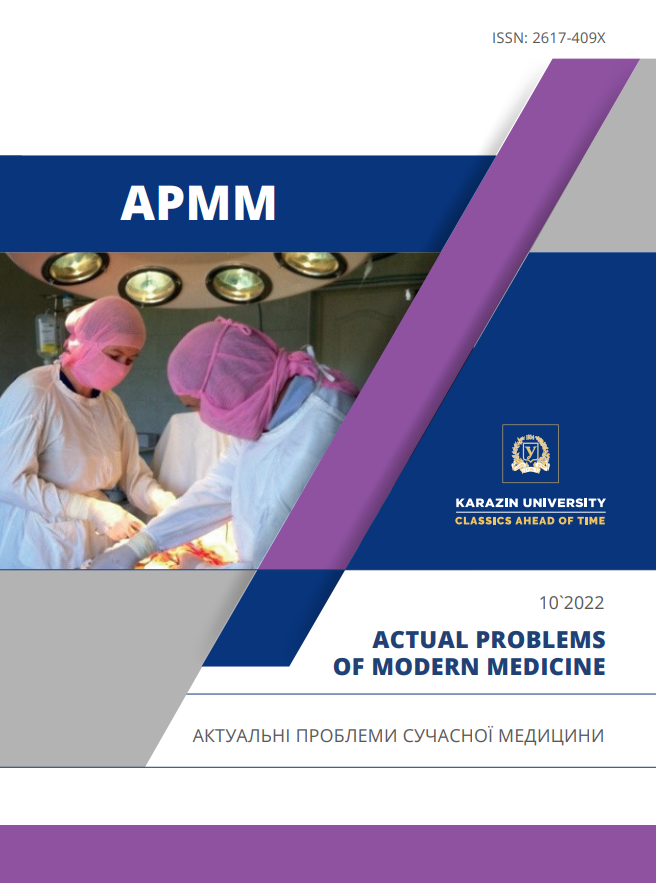Determination of the most significant medical and social factors regarding disorders of the physical development of school students in the conditions of modern society
Abstract
ABSTRACT. Physical development is an important criterion for children's health. During the period of children's growth, the action of micro and macro factors of society, which is changing, can have a significant impact on the formation of health and physical development. Therefore, the purpose of the work was to determine the medical and social factors related to violations of the physical development of schoolchildren in the conditions of modern society. Materials and methods. In accordance with the terms of the Declaration of Helsinki, an anonymous survey of students of a general secondary education institution in a large industrial city (376 schoolchildren) was conducted using a specially developed questionnaire that included questions about indicators of physical development (weight and height of the child), daily routine (including determining time spent on gadgets, spending free time), questions related to harmful habits and healthy lifestyle skills of schoolchildren, their physical activity, relationships in the family, as well as issues of self-assessment of one's own health and one's body (physical development). S. Kulbak's method was used to calculate the most significant medical and social factors influencing the formation of physical development. The results. It was established that the majority of schoolchildren had harmonious physical development (44.4% of students), disharmonious physical development was identified in 55.6% of schoolchildren, which was mainly due to body weight disorders (65.6%). The differences between the objective assessment (in accordance with the normative criteria of physical development) and the subjective assessment (by students) of one's own body as a result of physical development have been established. The most adequate to normative indicators is the self-esteem of children with excess body weight, and the most different - among students with low body weight, who in the vast majority of cases, evaluate their own body as "normal" (in 71.8% of cases). According to S. Kulbak's formula, among the calculated factors with the highest diagnostic coefficient of negative impact on physical development are: "material instability" as a reason for not following a healthy lifestyle (DC = - 10.0); lack of communication with parents on issues related to the state of health and the factors that shape it (DC = – 5.0); night sleep less than 6 hours (DC = – 5.0); lack of food in the educational institution during studies (DC = - 4.0); having experience using Vape, JUUL (DC = – 3.0); almost constant (more than 3-5 hours a day) computer use (DC = -5.0). Conclusions. It is advisable to use the identified features regarding the impact of medical and social factors on the physical development of school-age children for the introduction of preventive programs aimed at reducing the impact of negative factors, increasing the educational component of work with parents, as a criterion for early diagnosis of deviations in physical development.
Downloads
References
United Nations (2017) Resolution adopted by the General Assembly on 6 July 2017, Work of the Statistical Commission pertaining to the 2030 Agenda for Sustainable Development. URL: https://www.undp.org/sustainable-development-goals
Reducing noncommunicable diseases: a signature roadmap for the WHO European Region: a signature roadmap for the WHO European Region. Copenhagen: WHO Regional Office for Europe; 2022.
URL: https://www.who.int/europe/publications/i/item/WHO-EURO-2022-6620-46386-67147
Nakaz Ministerstva okhorony zdorovia Ukrainy vid 13.09.2013 № 802 «Kryterii otsinky fizychnoho rozvytku ditei shkilnoho viku». URL: https://zakon.rada.gov.ua/laws/show/z1694-13#Text
Fayura О, Маksymuk А, Аbrahamovych О, Аbrahamovych М, Tsyhanyk L,
Tolopko S, Ferko M. Risk Factors: Method of Determination and Evaluation, Prognosis in Medicine (Literature Review; Examples of Use in Own Clinical Practice) – First Notice. Lviv Clinical Bulletin. 2021; 1(33)-2(34): 51-64. https://doi.org/10.25040/lkv2021.01-02.051
International Report «Spotlight on adolescent health and well-being: Findings from the 2017/2018 Health Behavior in School-aged Children (HBSC) survey in Europe and Canada».




